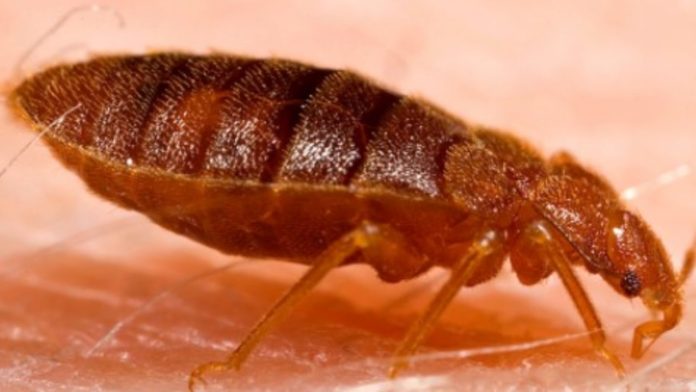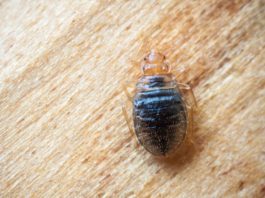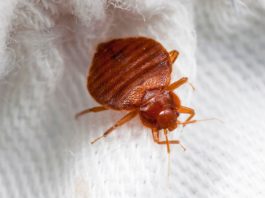The most annoying of all are bed bugs. Despite the fact that they can be quite irritating, they are rarely fatal. In some cases, they can cause an allergic reaction or an infection. These brave little insects don’t care where they set up shop; upscale hospitals and apartments, public housing, and wealthy neighbourhoods are all attractive to them.
The bugs can be found in your bed, furniture, carpet, clothes, and other valuables. They are most active at night. So, how do these insect bites appear? What are bed bug bites’ early warning signs? What are our possibilities for getting rid of them?
Not to worry! Continue reading this post to learn the answers to all of your questions about bed bugs and the different preventative measures.
What Are Bed Bugs?
 Bed bugs are little, round, brownish insects that feed on animal or human blood. Adult bed bugs are about the size of an apple seed, with flat bodies. However, after feeding, their bodies enlarge and turn a crimson tint.
Bed bugs are little, round, brownish insects that feed on animal or human blood. Adult bed bugs are about the size of an apple seed, with flat bodies. However, after feeding, their bodies enlarge and turn a crimson tint.
Bed bugs reside in cracks and crevices in and around your bed, particularly in mattress seams, and they spread through clothing, furniture, bedding, and baggage. They prefer to feed on humans but will eat other warm-blooded animals as well. They eat mostly at night.
While bed bugs do not spread diseases, they are unpleasant and difficult to eradicate.
How To Know If You Have Bed Bugs?
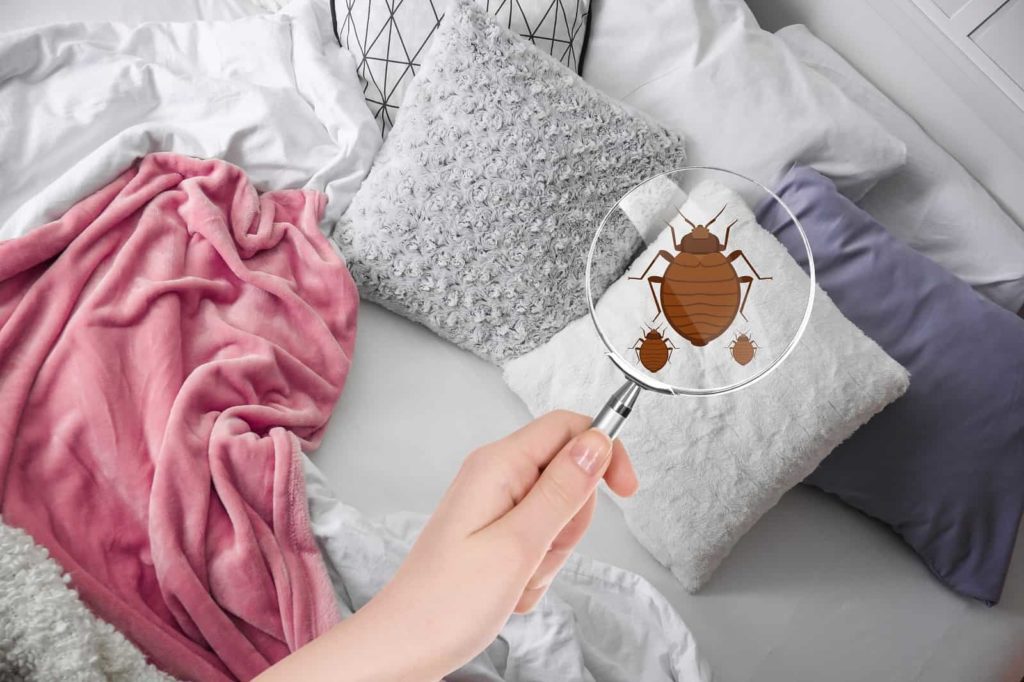
Although bed bugs don’t normally necessitate immediate medical attention, they can cause a lot of stress and sleepless nights. Dermatologists advise looking for the following symptoms near places where you sleep to help identify bed bugs before they reach you (and your things).
Early Signs of bed bugs: This is a critical stage. If you have a bed bug infestation, you must identify it so that you can eradicate the bed bugs. The only way to stop the bites is to get rid of the bed bugs.
You may notice the bugs if you have a significant number of bed bugs. Most people, on the other hand, only see indicators of bed bugs. Check the following places where people sleep for signs of bed bugs:
- A pleasant, musty odour – Take a deep breath. If you smell something sweet or musty in your hotel room, cruise ship cabin, or other sleeping place, you may have a bed bug infestation. Bed bugs release compounds to aid communication, albeit not everyone will detect the odour.
- Blood splatters on bedding, mattresses, or upholstered furniture like couches and headboards – Examine your blankets, sheets, and mattress pads thoroughly before moving on to the mattress and box spring. Is there blood everywhere, especially at the seams? If this is the case, you may have a bed insect infestation. Check for blood specks on all upholstered furniture, including couches and headboards.
- Bed bugs have an exoskeleton – which they shed and leave behind. Do you notice shell-like residues on your mattress, mattress pad, or under your couch cushions?
- Blackish specks on bedding, mattress, headboard, or beneath couch cushions – These could be bed bug excrement.
- Egg – Female bed bugs lay white, round eggs in cracks and crevices after mating. Remember that these will be little, as a bed insect is roughly the size of an apple seed.
If you do get bed bugs and have multiple bites or a bite that appears to be infected, consult a board-certified dermatologist. A dermatologist can cure an infection and provide relief from itching.
What Do Bed Bugs and Bed Bug Bites Look Like?

Adult bed bugs have flat, oval-shaped bodies and no wings. They are usually 6–10 mm long and the size and shape of an apple seed. Bed bugs’ coloration changes from brown to brownish-red following a blood meal (feeding on the blood of a host).
Bed bug bites have no differentiating indications or symptoms from other insect bites. After being bitten by a bed bug, you may not detect it immediately. Most individuals aren’t aware of it since bed bugs inject an anaesthetic when they bite (as well as an anticoagulant). The bites may not be visible on your skin right away. Some people have bites that are visible up to 9 days after being bitten.
The bites appear as red, inflamed regions of skin. They might be in a row or line and are frequently irritating. They can appear on the face, neck, arms, and hands, as well as other body regions that are not covered when sleeping. In the morning, new bites are frequently detected.
Some people are allergic to the bites and have severe itching and hives (urticaria). The bites normally disappear within 1 to 2 weeks of being bitten.
Symptoms Of a Bed Bug Bite
Bed bugs expel a trace of anaesthesia before feeding on humans, so you won’t feel anything when they bite you. Bedbug bite symptoms can take a few days to appear.
Some people have no obvious symptoms after being bitten by a bedbug. A bed bug bite causes no reaction in 30 to 60% of people. When symptoms do appear, the bites are usually:
- Each bite is red and swollen, with a dark mark in the centre (they may also look like a hive or welt)
- Organized in lines or clusters, with many bites combined
- Itchy
- Burning
- Blisters packed with fluid
- Scratching may also leave blood stains on the linens.
Bug bites can bleed or develop an infection if they are scratched.
How To Get Rid Of Bed Bugs In Your House?

It is beneficial to control and eradicate a bed bug infestation by doing the following:
- Clean your floors, beds, furniture, and appliances with a vacuum and steam cleaner.
- Use the hottest settings on your washing machine and dryer to wash your linens, draperies, and apparel.
- Items that cannot be washed should be sealed in plastic bags and stored for several days at 0°F (-17°C) or months at warmer temps.
- Items that can be safely heated to 115°F (46°C) should be heated.
- Caulking may be used to fill gaps around baseboards and cracks in furniture.
Our Curated List For :
Check Bed Bug Relief Creams
Bed Bug Relief Liquids
Bed Bug Relief Spray
How To Get Rid Of Bed Bugs Without An Exterminator?
Without the help of an exterminator, getting rid of bedbugs is nearly difficult. Many exterminators currently utilize non chemical eradication methods like extremely hot or extremely cold liquid nitrogen. Because bed bugs are resistant to most insecticides, these solutions may be the most effective approach to exterminate them.
Learn more about handling bed bug infestations in detail.
How To Prevent Bed Bug Bites Naturally?
Bed bugs spread by hiding in items such as furniture, clothing, blankets, and baggage. They can go months without eating. This makes it easy to unintentionally bring bed bugs into your home.
You may help avoid bed bugs by doing the following steps:
- Travellers who have been exposed to bed bugs or are concerned about them should disinfect their luggage, clothes, and valuables using mechanical means when they return home (brushing, vacuuming, heating, washing, or freezing).
- When traveling, always use luggage racks to keep your clothes off the floor and away from hotel furnishings.
- When you get home from a trip, keep your suitcase away from your bed and run your items through a dryer cycle before putting them away.
- When traveling, keep your clothes in vacuum-sealed bags.
- When you get home from a trip, put objects that can’t be washed in a plastic bag and store them for several weeks.
- If you travel frequently, you can acquire a device that heats your bag to eliminate any bed bugs.
- Before bringing any secondhand furniture, linen, or clothing into your home, inspect it for signs of bed bugs.
- If you use a common laundry room, keep your laundry in plastic bags and do not fold it until you get home.
Our Curated List For :
Check Bed Bug Relief Creams
Bed Bug Relief Liquids
Bed Bug Relief Spray
What Are Home Remedies For Bed Bug Bites?
- Calamine lotion – It is excellent for treating bed insect bites. It soothes irritation while also drying rashes and protecting the skin.
- Baking soda and water – Make a paste using these ingredients and apply it straight to the skin. Allow it to dry before wiping it with a cotton pad.
- Toothpaste – It contains menthol, which is an effective anti-itch treatment. Apply liberally to the bite to relieve the burning sensation and itching.
- Witch Hazel – This plant has a minor anaesthetic effect that helps to relieve itching after a bite. Witch Hazel is available as an infusion, pill, or mother tincture.
- Aloe Vera – Aloe Vera (both “fresh” and as a gel) is effective against bug bites. Aloe vera’s active compounds and amino acids assist in reducing itching and burning feelings caused by a bite.
- Lemon juice – It has antibacterial and anti-inflammatory effects. It also acts as a natural astringent. Lemon juice helps relieve itching and dry rashes while also lowering redness and swelling.
Our Curated List For :
Check Bed Bug Relief Creams
Bed Bug Relief Liquids
Bed Bug Relief Spray
Bed Bug Bites On Pets
Bed bugs do not only bite people. They can also feed on household pets.
If your pet has been attacked by bedbugs, the bites will most likely heal on their own. However, in some situations, they may become contaminated. If you feel suspicious that your pet has an infected bite, make an appointment with a veterinarian.
If you engage a pest control professional to get rid of bed bugs in your house, make sure they know you have a pet. Some insecticides may be less hazardous to your pet than others. It’s also critical to clean your pet’s bed, soft toys, and other accessories that could harbor bed bugs.
Bed Bug Bites vs Hives
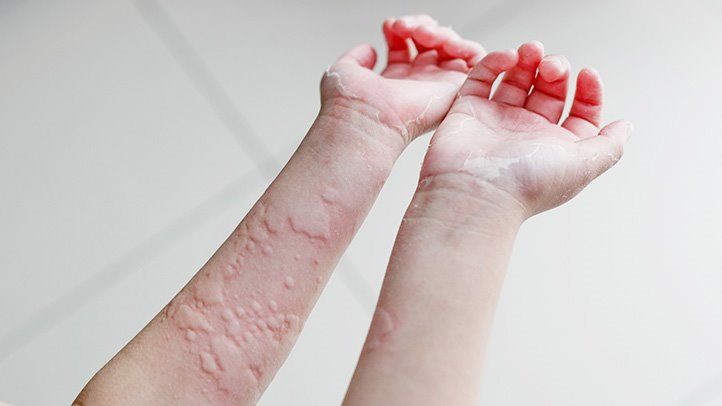
People sometimes confuse hives with bed bug bites. Hives are red spots on your skin that might appear as a result of an allergic reaction or another cause. They are frequently irritating, similar to bed bug bites.
Bed bug bites may first appear as hives with little central lumps or bites. Hives from bed bug bites, on the other hand, do not last more than 24 hours. They usually migrate to other areas or disappear.
Hives are more likely if you acquire red bumps on your skin that grow in size, change shape, or spread from one place of your body to another in a short amount of time.
Bed bug bites are more likely to be a small group or line of bumps that occur on one portion of your body without altering shape or position.
Get medical attention right away if you get hives accompanied with breathing difficulties, swelling of the lips and throat, wheezing, a high heart rate, or confusion. You could be suffering from anaphylaxis, a potentially fatal allergic reaction. Find out more about anaphylaxis and other possible causes of hives.
Bed Bug Bites vs Fleas
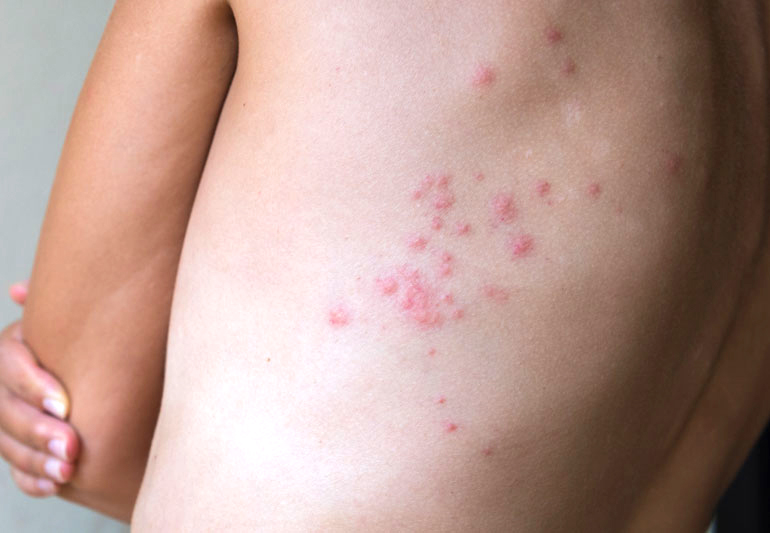
Bed bug bites and flea bites seem very similar, however, flea bites are often a little smaller. Both can result in the formation of red pimples on your skin. Both can be extremely irritating.
Fleas often attack the bottom half of your body or warm, damp places near joints when they bite. They may, for example, bite:
- Our feet
- Our ankles or legs
- Our armpits
- The inside of your elbows or knees
Bed bug bites can also develop at night and resemble hives. Later in the day, though, they shrink and resemble a pimple.
If you believe you have been bitten by bed bugs or fleas, look for evidence of the bugs in your home. Bed bugs frequently lurk in mattress seams, crevices in bed frames and headboards, and baseboards surrounding beds. Fleas prefer to reside on household pets, carpets, and upholstered furniture.
You can also see a dermatologist, who will check the bites and help determine the reason.
If you locate bed bugs or fleas, you must treat your home or pet immediately.
Learn the distinction between a flea bite and a bed bug bite.
Bed Bug Bites vs Mosquito Bites
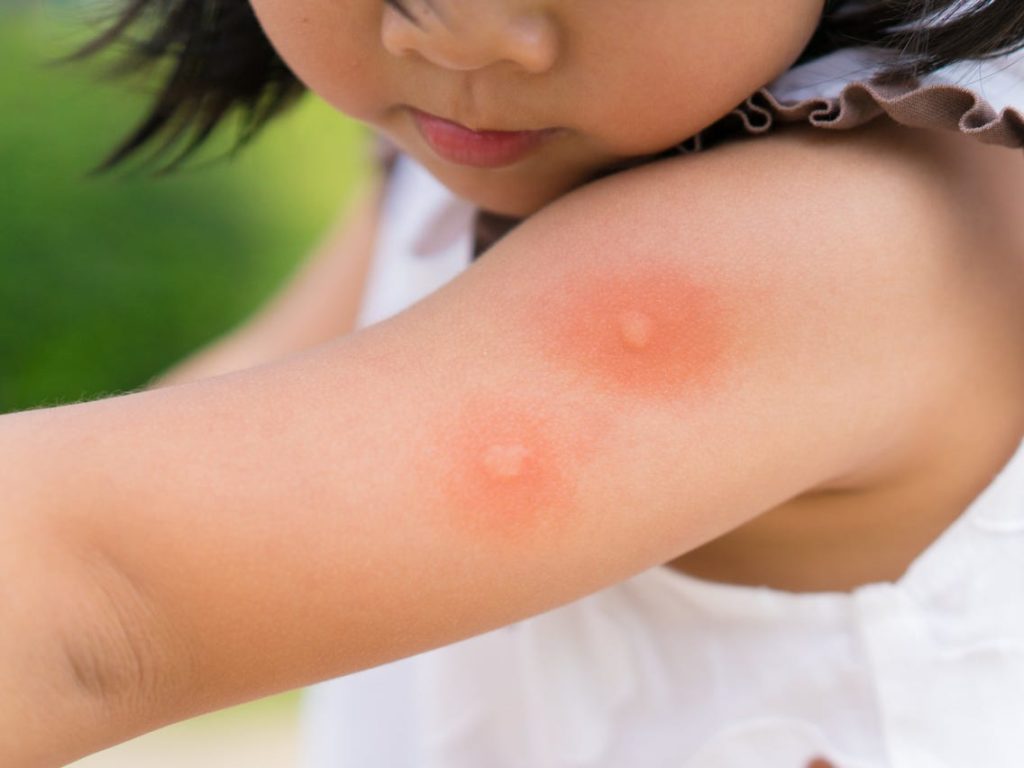
Both bed bug and mosquito bites can be red, swollen, and uncomfortable. Bed bug bites are more likely if you have a line of bites that emerge in a limited area of your body. Bites with no discernible pattern are more likely to be mosquito bites.
Bed bugs and mosquito bites usually heal on their own in 1 or 2 weeks. Applying a cold compress, calamine lotion, or other topical therapies may help reduce itching and other symptoms. Taking an antihistamine by mouth can also help.
Bedbug bites can also be confused with spider bites, ant bites, or other insect bites. Learn more about the distinctions between these sorts of bites.
Bed Bug Bites vs Spider Bites
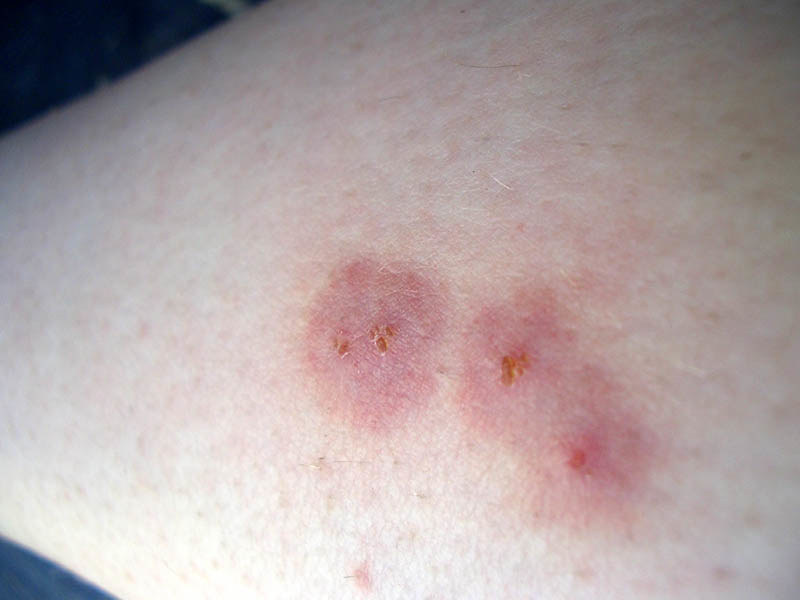
Spider bites, like bed bug bites, can be red and itchy. Spiders, on the other hand, rarely bite more than once, unlike bed bugs. If you have only one bite on your body, it is most likely not from bed bugs.
Spider bites are notorious for taking longer to heal than other forms of bug bites. Some spider bites can cause substantial skin damage, especially if they get infected. Wash any bug bites with soap and water to lessen the chance of infection.
Poisonous spiders exist. If you believe you have been bitten by a dangerous spider, get medical attention immediately.
Chigger Bites Vs Bed Bug Bites

Bed bug and chigger bites are both present on your skin as raised, red, inflammatory patches.
Bed bug bites are most common near exposed skin and might appear in lines or in random clusters. Chigger bites are concentrated in areas near tight-fitting garments.
Read more about the comparison between chigger bites and bed bug bites in detail.
Scabies vs Bed Bug Bites
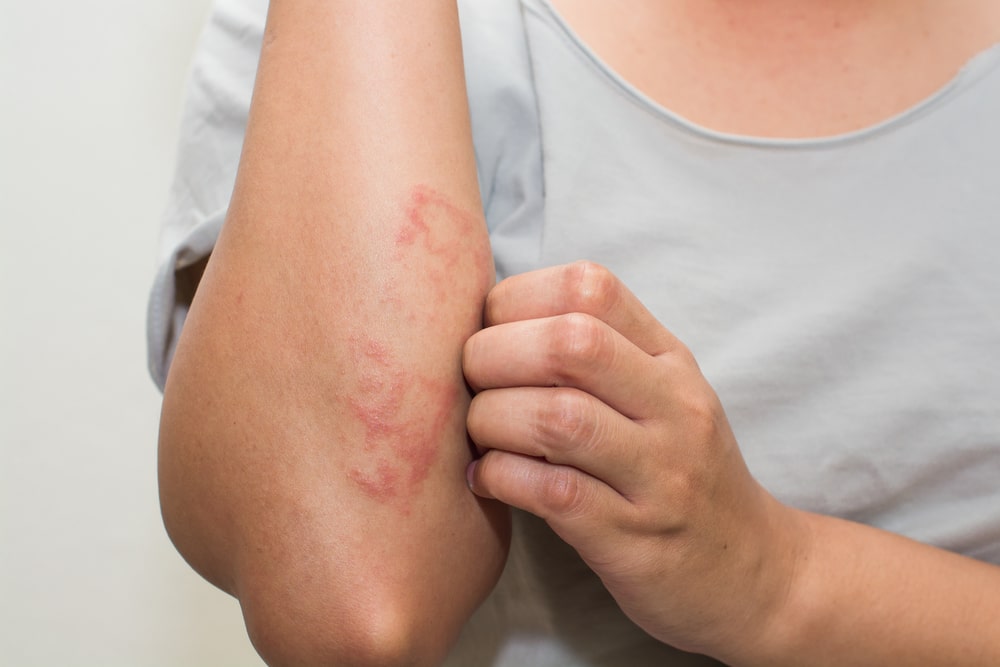
Bed bugs are parasitic insects that live on humans. They feed on human blood, although they may also consume blood from other mammals such as cats and dogs.
Bedbugs have the following physical characteristics:
- body shape: flat and oval
- wingless
- six limbs
- 5 to 7 millimetres in length, around the size of an apple seed (adults)
- transparent or white (babies)
- dark brown (adults)
- after feeding, dark crimson (adults)
- a sweet, musty odour
Human skin is not infested by bedbugs. Instead, they infest dark and dry places, such as mattress seams. They may also infest gaps in the bed frame, furniture, or drapes.
On the other hand, Scabies mites are microscopic insects. Ticks and other arthropods are connected to them. Sarcoptes scabiei var. hominis, sometimes known as the human itch mite, is the type that typically infects humans.
Mites infest and feed on human skin tissue. Their physical traits include the following:
- the body is spherical and sac-like
- wingless
- eyeless
- eight limbs
- microscopic dimension (invisible to the human eye)
During an infestation, an immature female burrows a tunnel into the skin’s top layer. She lays two to three eggs every day in this location. The tunnel’s length might range between 1 and 10 millimetres.
The larvae migrate to the skin’s surface when the eggs hatch, where they grow and spread to various regions of the body.
Bed bug bites produce itchy, red welts in a zigzag pattern, with clusters of bites (typically 3 to 5) appearing anywhere on the body.
Scabies bites, on the other hand, induce extreme itching that worsens at night and results in tiny bumps or blisters as well as a patchy rash with thin, raised, uneven, whitish-grey or skin-coloured rows.
Dust Mite Bites vs Bed Bugs
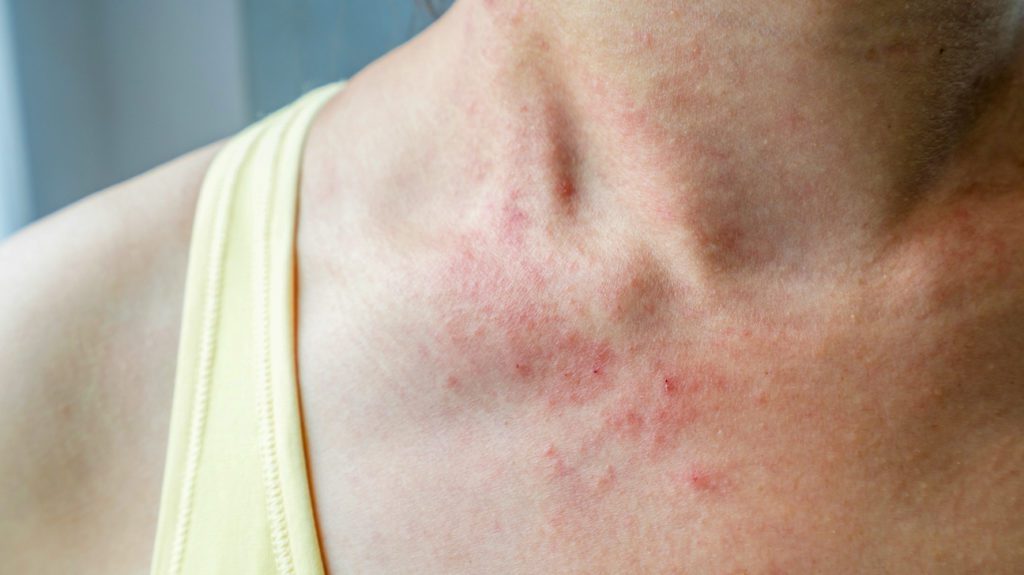
Bed bugs are visible to the human eye and are larger than dust mites. Because they reside in bedding, carpets, and curtains, they are frequently confused for dust mites. They can also trigger allergic reactions, just like dust mites.
The main distinction is that bed bugs bite humans and feed on their blood. Dust mites sting but do not bite.
You can read more about the difference between dust mites and bed bug bites in detail.
Bat Bug vs Bed Bug Bites
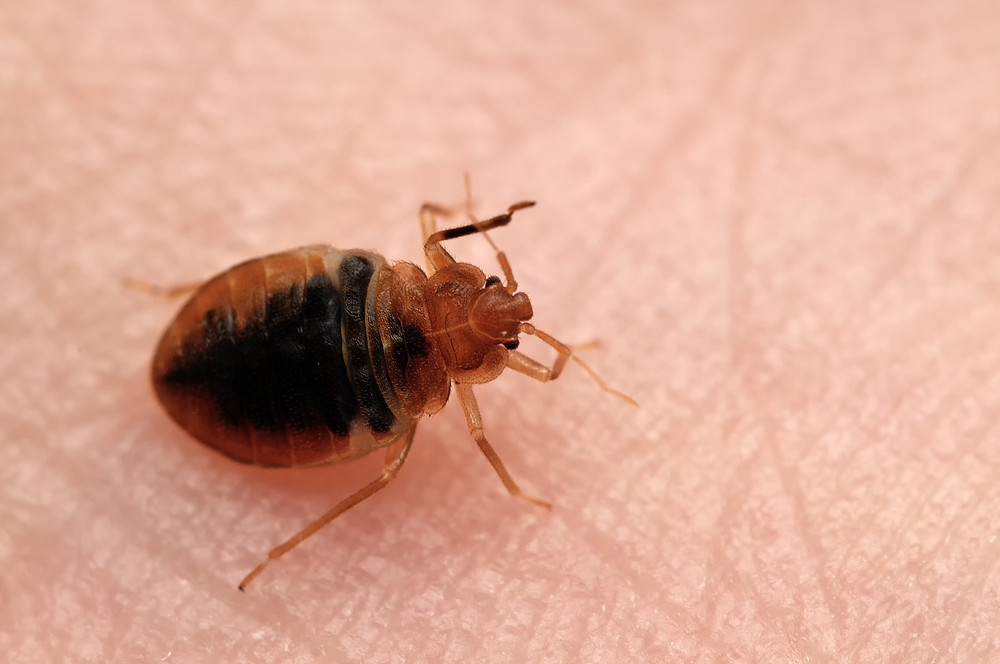
Bat bugs, like bed bugs, feed on human blood. They are free-living parasites, which means they do not live on their hosts (bats), but rather in the environment. Bedbugs, on the other hand, enjoy the taste of human blood, whilst bat bugs prefer bat blood. This is not to say they will not feed on humans; rather, we are not their favorite food source.
Bat insect bites can be unpleasant; in fact, they have been reported to be more painful than bed bug bites. Some people develop an allergic reaction to the saliva of bat bugs, resulting in an uncomfortable welt or lump at the site of the bite. Scratching can cause the bite to get infected, which can lead to more serious health problems.
Bat bugs, like bed bugs, like dark, protected environments. They are excellent at concealing in small areas, such as woodwork and bedding. Bat bugs will typically stay near where bats roost in order to feed on bats while they sleep; but, if bats leave, bat bugs will likely travel into more inhabited regions of the home in order to locate a new food supply (a.k.a. you).
Bat bugs and bed bugs look similar, in addition to enjoying blood and surviving in similar settings. In fact, they are nearly identical to the naked sight. Bat bugs, like bed bugs, have little oval-shaped bodies that turn a dark, reddish colour after feeding. So how do you tell them apart? If you compare the two with a magnifying glass or microscope, you’ll notice that the bat bug has more hair on its thorax. If you do not want to get too close to the pests, it is advisable to have a specialist identify the bug.
Bed Bugs vs Lice Bites

While body lice are almost always found in overcrowded and unclean locations, bed bugs rarely imply a lack of sanitation or personal hygiene.
Bed bugs typically enter the home on baggage, sharing bedding, or old furniture.
Bed bugs are larger than lice, measuring 1–7 mm in length, and an infestation can produce an almond-like odor. Exoskeletons that have been discarded may also be found in bedding.
Bed bugs bite at night, while the victim is resting in the contaminated region, whereas body lice bite during the day.
They are difficult to notice without a spotlight since they like gloomy settings.
Bed bug bites typically appear as a line or cluster of three or more marks. These only irritate persons who have an allergic reaction to the bugs’ saliva.
Tick vs Bed Bug Bites
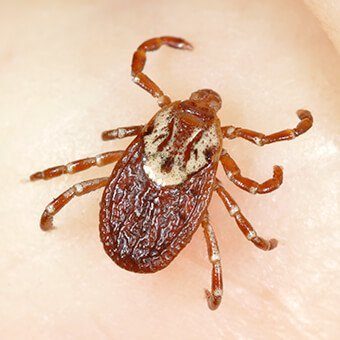
Ticks have eight legs, whereas bed bugs only have six. Ticks prefer the outdoors, whereas bed bugs prefer to dwell indoors. Ticks are major disease spreaders, while bed bugs are not. Ticks prefer to feed on animals, but bed bugs prefer to feed on humans.
Bed bugs are much larger than ticks.
Ticks and bed bugs are similar at first glance; both are oval-shaped, lack wings, and have relatively flat bodies. There are, however, differences that allow them to be distinguished. Bed bugs are typically reddish-brown in colour, whereas ticks have lighter bodies and darker legs with stripes.
Ticks only bite once; bed bugs bite multiple times. To feed, a tick will grip your body and bury its head beneath your skin. While they can bite anywhere on the body, they favour warm, wet places like the groin or armpit.
Bed bugs, on the other hand, feed on the top layer of your skin. They get into your bloodstream by entering your skin with their tube-like lips. When they finish eating, they either drop off or, more commonly, go to another location and bite again. Bed bugs attack anywhere your skin is exposed. Ankles, chest, arms, hands, neck, and even the hosts’ faces are common targets.
Bed Bug vs Roach Bites
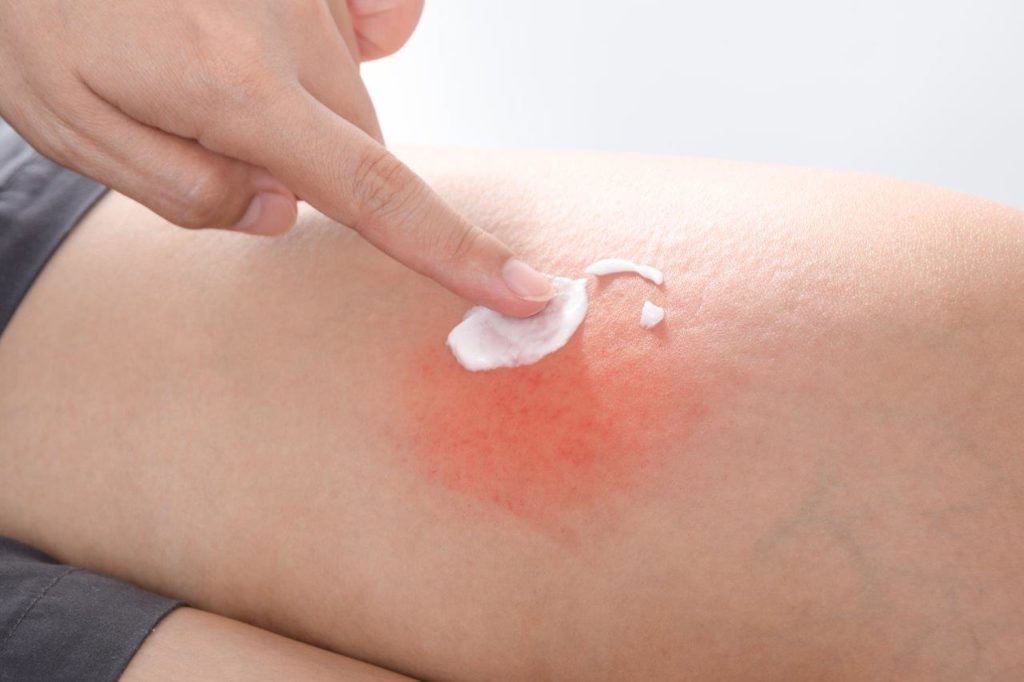
Both bed bugs and cockroaches can bite. Bed bugs, on the other hand, are far more aggressive and attack humans far more frequently than cockroaches. Their bite causes an itchy, red rash on the skin.
Bed bugs are blood-sucking insects that rely on it to thrive. When a bug comes into contact with a human, it clings to the host and sucks blood until it is full.
Cockroaches can bite, although they almost seldom bait humans. They are not bloodsucking insects and eat garbage, food scraps, and even dung.
If roaches discover more accessible food sources, they are less likely to bite humans. If they cannot find another food source, they may try to bite humans.
Carpet Beetle vs Bed Bug Bites
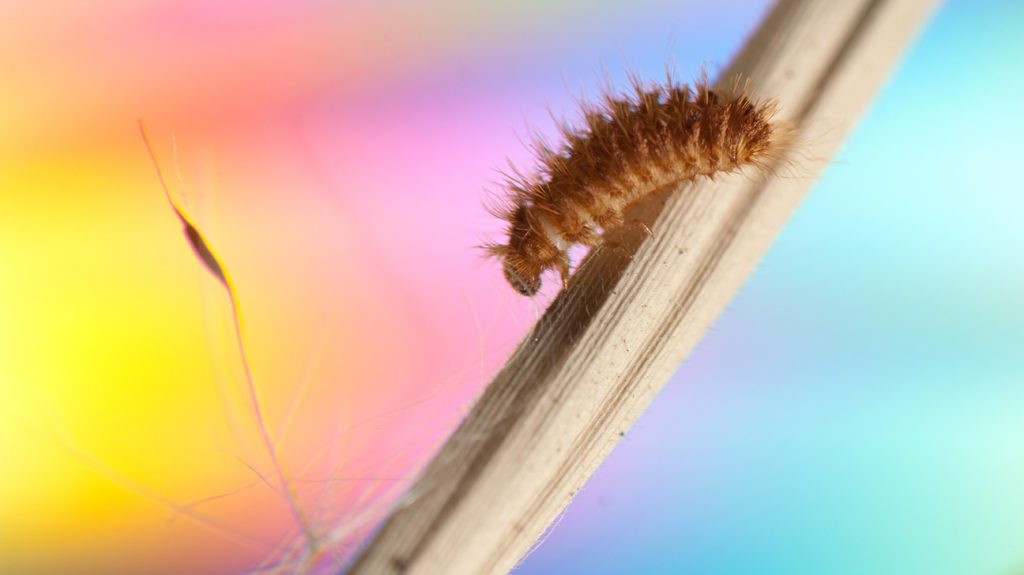
Bed bugs are little oval-shaped insects that are reddish brown or tan in hue. They have flat bodies the size of an apple seed. They lack wings and are unable to fly. They are nocturnal and seek dark, calm environments such as under mattresses.
Carpet beetles, on the other hand, are oval in shape but are black, brown, white, or orange with a mottled pattern. They have wings and can travel to new places. Adults are drawn to windows and bright areas.
The primary distinction between bed bugs and carpet beetles is that carpet beetles do not bite, whereas bed bugs do. Bed bugs require blood in order to develop and breed. A bed bug, like a mosquito, will insert its elongated snout into your skin and extract your blood. This frequently results in red bite marks that itch.
Carpet beetle bites, if you’ve heard of them, are just an allergic reaction to the hair on the larva’s body. Carpet beetle larvae have spiky hair bristles on their bodies, akin to a fuzzy caterpillar. These prickly hairs can induce a bite-like reaction in people who are allergic to them when they crawl over them.
Carpet beetle larvae eat organic substances such as wool, cloth, carpet, leather, and feathers instead of blood. They are hungry for their size and can destroy rugs, clothing, and upholstered furniture. Their destructive course will continue until they are able to molt enough times to become adults. When a carpet beetle matures, its food turns to pollen.
Final Words
Bed bugs are tiny insects that feed on human blood. They live inside your home’s furnishings and other items. They are capable of biting both people and other animals. Although the initial bite is rarely painful, it can leave behind a cluster or line of itchy, red bumps.
These insects spread by hiding in bags, clothing, linen, furniture, and, occasionally, electronic devices. Most bites often recover on their own in a week or so. It is possible to cure bed bug bites with soap, water, and calming creams. In some cases, these bites might get infected and need medical intervention.
Frequently Answered Questions
Q1. Do bed bugs fly?
During the day, bed bugs hide on beds (mattress seams, box springs, bed frames, and headboards), as well as in cracks and crevices in walls, floors, and furniture. They appear at night.
They don’t have wings so they cannot fly, but they can move quickly.
Q2. Do bed bugs jump?
Bed bugs, unlike certain other insects, cannot jump long or short distances. Bed bugs move around by crawling and climbing. Bed bugs are excellent climbers and have been known to drop from great heights.
Q3. Where do bed bugs come from?
Bed bugs can spread from contaminated locations or from worn furniture. They can get into bags, purses, backpacks, and other soft or cushioned surfaces.
They can move between rooms in multi-unit structures like apartments and hotels.
Q4. What kills bed bugs instantly?
The high temperature of steam, 212°F (100°C), destroys bed bugs instantly. Slowly apply steam to mattress folds and tufts, as well as sofa seams, bed frames, and any corners or edges where bed bugs may be lurking.
Q5. What are bed bugs attracted to?
Bed bugs are drawn to warmth, blood, and carbon dioxide rather than dirt and grime. Clutter, on the other hand, provides more hiding places.
Q6. How do bed bugs reproduce?
Female bed bugs typically lay one to seven eggs every day following a blood feeding. However, the female bed bug’s mating process can be problematic at times. Mating too frequently can result in damage. As a result, greater mating sessions do not necessarily result in more eggs being produced by female bed bugs.
A female bed bug, on the other hand, is more inclined to relocate away from her initial position to a spot where she can be sure of a food source and a shortage of partners. A female bed bug can lay a large number of eggs if there is no interruption and availability to nourishment.
Q7. Can bed bugs kill you?
Each person is affected differently by a bed bug bite. Bite reactions can range from no visible symptoms of the bite to a little bite mark to a severe allergic reaction. Bed bugs are not thought to be hazardous. They are unable to kill you. An allergic reaction to many bites, on the other hand, may necessitate medical intervention.
Q8. Does diatomaceous earth kill bed bugs?
Bed bugs are killed by diatomaceous earth, which acts as a desiccant.
It generally helps bed bugs preserve moisture and nutrition inside their bodies by abrading their waxy coating. Moisture escapes when the coating is pierced or destroyed by DE powder, causing the bed bugs to dehydrate and die.
Q9. Does steam kill bed bugs?
At 122°F (50°C), both adult bed bugs and bed bug eggs will perish within minutes. At 212°F (100°C), steam arises from water, thus it’s already well above the lethal point required to destroy bed bugs quickly. At that temperature, steam will kill almost any insect.
Q10. Can bed bugs make you sick?
Humans are not directly harmed by bed bugs. The underlying cause of most human illnesses caused by bed bug bites was allergies, blood loss, or infection.
Q11. What temperature kills bed bugs?
Bed bugs exposed to 113°F for 90 minutes or longer will perish. When exposed to 118°F, they will die in 20 minutes. To achieve 100% mortality, their eggs must be exposed to 118°F for 90 minutes.
Q12. Does alcohol kill bed bugs?
While isopropyl alcohol, also known as rubbing alcohol, can kill bed bugs and their eggs, it is not an effective technique to get rid of an infestation. Because bed bugs hide in gaps and crevices, alcohol must be administered directly to the bugs.
Q13. What do bed bugs look like on a mattress?
Bed bugs, despite their small size, will be visible on a mattress. They have a reddish-brown tint and are about the size of a pumpkin seed. It’s unusual to see bed bugs wandering around on their own.
Q14. What do bed bugs smell like?
These bugs have a musty, pleasant odour that is sometimes compared to berries. It is frequently necessary to have a substantial infestation to identify this bed bug odor. Dark blood stains on linens and bedding are also symptoms of an infestation.
Q15. Does bleach kill bed bugs?
While bleach will kill one or more bed bugs, it will not destroy the bed bugs that are lurking, therefore it will not eliminate an infestation.
Q16. Does vinegar kill bed bugs?
Because vinegar is a powerful acetic acid that can destroy an insect’s nervous system, spraying it directly on bed bugs can kill them.
Q17. Does Lysol kill bed bugs?
Nope, it doesn’t. Despite the fact that Lysol can kill bed bugs on touch, it cannot destroy bed bug eggs. As a result, applying Lysol around your house is inefficient and harmful to you and your family. Look at other therapies like heat, pesticides, desiccants, or insecticides.
Q18. Does raid kill bed bugs?
Bed Bugs and their eggs are killed with Raid® Bed Bug Foaming Spray before they hatch. Foam extends into hard-to-reach areas to kill Bed Bugs where they hide and continues to kill Bed Bugs on surfaces for up to 4 weeks. Effective against bed bugs that are resistant to pyrethroids.
Q19. Do spiders eat bed bugs?
If given the chance, spiders will devour bed bugs. Furthermore, not all spider species will trap and eat bed bugs.
Q20. Do bed bugs bite cats?
Bed bugs do not reside on cats and do not spend as much time on them as other pests (such as fleas, ticks, lice, and mites), but they can bite them.

